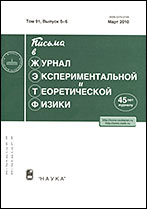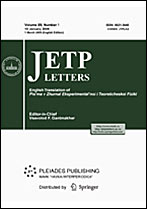|
This article is cited in 14 scientific papers (total in 14 papers)
CONDENSED MATTER
Electronic and spin structures of intrinsic antiferromagnetic topological insulators of the MnBi$_2$Te$_4$(Bi$_2$Te$_3$)$_{m}$ family and their magnetic properties (brief review)
A. M. Shikin, D. A. Estyunin, D. A. Glazkova, S. O. Ful'nov, I. I. Klimovskikh
Saint Petersburg State University
Abstract:
Magnetic topological insulators (TIs) are narrow-gap semiconductor materials combining a nontrivial band structure and the magnetic order. Unlike their nonmagnetic analogs, magnetic TIs can have a band gap in the electronic structure of surface states, which allows a number of exotic phenomena such as the quantum anomalous Hall effect and chiral Majorana fermions, which can be applied in spintronics. Up to now, magnetic TIs were fabricated only by doping with $3d$ transition metals (Cr, Co, V, Fe, Mn). However, such an approach provides these materials with strongly inhomogeneous magnetic and electronic properties, which allow the observation of the mentioned effects only at very low temperatures. An intrinsic magnetic TI, which is a well-ordered stoichiometric magnetic compound, can be an ideal solution to these problems. In this review, an experimental study of the electronic and magnetic properties of the first representative MnBi$_2$Te$_4$ of the intrinsic magnetic TI, as well as the MnBi$_2$Te$_4$(Bi$_2$Te$_3$)$_{m}$, $m\geqslant1$, family of such TIs constructed from a sequence of MnBi$_2$Te$_4$ magnetic blocks separated by $m$ Bi$_2$Te$_3$ nonmagnetic blocks, is presented. The effect of magnetism on the electronic structure is the strongest in MnBi$_2$Te$_4$ and decreases with increasing $m$. In particular, MnBi$_2$Te$_4$ has antiferromagnetically ordered Mn layers in neighboring blocks and a magnetic transition temperature (Néel temperature) of about $24.5$ K. The antiferromagnetic order is also observed in compounds with $m = 1$ and $2$, but the ordering temperatures are much lower, $13$ and $11$ K, respectively. At larger m values, MnBi$_2$Te$_4$ magnetic blocks hardly interact with each other and are in essence two-dimensional magnets. The electronic structure of topological surface states for this family is characterized by a single Dirac cone whose form and properties depend on m and on magnetic/nonmagnetic termination at $m \geqslant1 1$. In the case of magnetic termination of the surface, the gap can be opened at the Dirac point. It is maximal for MnBi$_2$Te$_4$ and is expected to be $80$–$90$ meV. However, the possibility of its variation in the range from almost $0$ to $70$ meV for various samples is experimentally demonstrated. To determine the reasons for such deviations, density functional theory calculations are performed.
Received: 09.12.2021
Revised: 23.12.2021
Accepted: 24.12.2021
Citation:
A. M. Shikin, D. A. Estyunin, D. A. Glazkova, S. O. Ful'nov, I. I. Klimovskikh, “Electronic and spin structures of intrinsic antiferromagnetic topological insulators of the MnBi$_2$Te$_4$(Bi$_2$Te$_3$)$_{m}$ family and their magnetic properties (brief review)”, Pis'ma v Zh. Èksper. Teoret. Fiz., 115:4 (2022), 241–255; JETP Letters, 115:4 (2022), 213–225
Linking options:
https://www.mathnet.ru/eng/jetpl6613 https://www.mathnet.ru/eng/jetpl/v115/i4/p241
|


|





 Contact us:
Contact us: Terms of Use
Terms of Use
 Registration to the website
Registration to the website Logotypes
Logotypes








 Citation in format
Citation in format 
